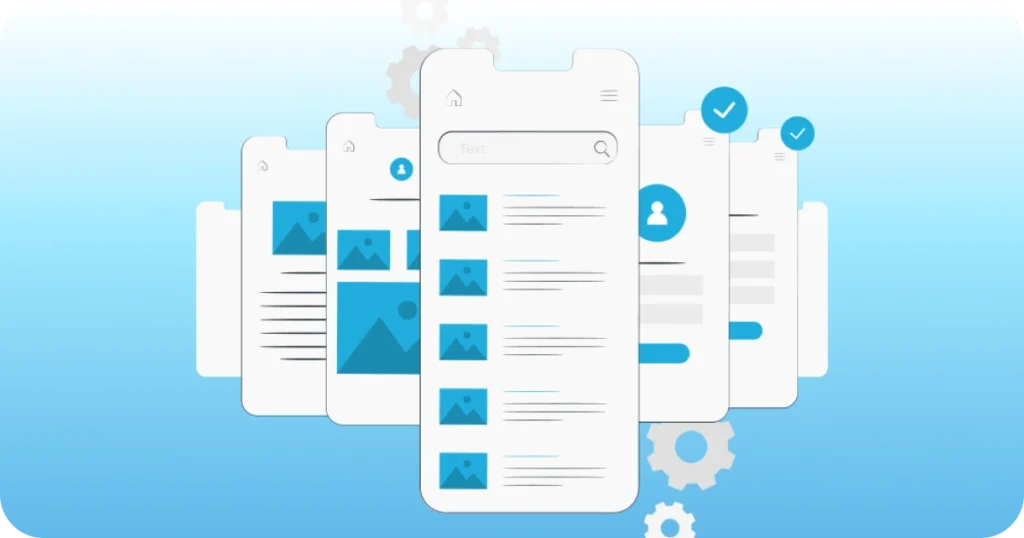In the ever-evolving digital landscape, mobile apps have become the cornerstone of businesses, serving as vital tools for connecting with customers, increasing sales, and enhancing user engagement. However, building a successful app is more than just coding a simple program—it requires a detailed, well-thought-out process that covers design, development, testing, optimization, and maintenance. Get ready to start with 360° AppCraft Solutions.
This is where 360° AppCraft Solutions come into play. A holistic, end-to-end approach to mobile app development ensures that every stage of the process is covered, from initial ideation to post-launch support. In this blog post, we’ll walk you through the 360° AppCraft Solutions step by step, helping you understand the key elements involved in developing a high-performing, user-friendly mobile app.
Step 1: Ideation and Conceptualization
The first step in any successful app development project is ideation and conceptualization. This is where your app idea is born, shaped, and transformed into a clear vision. To begin, it’s crucial to understand your target audience, define your business objectives, and establish a purpose for the app.
Ask questions like:
- What problem does your app solve?
- Who are your target users?
- What features will your app offer to meet user needs?
Once you’ve answered these questions, it’s time to create a user persona and a user journey map. These tools help visualize the app’s goals, user expectations, and the user experience (UX) from start to finish.
Step 2: Market Research and Competitor Analysis
After defining the core idea, the next step is to conduct market research and competitor analysis. This helps you understand the existing market, the competition, and any gaps that your app can fill.
During this phase, you should:
- Analyze competitors’ apps, noting their strengths and weaknesses.
- Study customer feedback and reviews on competitor apps to identify common issues users face.
- Investigate current market trends, emerging technologies, and industry best practices.
This research will help refine your app’s features, design, and positioning in the market.
Step 3: Wireframing and UI/UX Design
Once you have a solid understanding of the app’s concept, audience, and market, it’s time to create a visual representation. Wireframing is a crucial step where the layout and flow of the app are planned out, typically in the form of sketches or basic digital wireframes. This is followed by the UI/UX design process, which focuses on making your app visually appealing and easy to navigate.
Consider these essential elements during the design phase:
- User Interface (UI): The graphical design of the app, including the layout, colors, typography, and buttons. A clean, intuitive UI is key to improving the user experience.
- User Experience (UX): The overall feel of the app and how users interact with it. Ensure that the navigation is smooth, the app is responsive, and the tasks are easy to accomplish.
Step 4: App Development
With the design finalized, the next step is app development. This stage is where the actual coding of the app takes place. There are two primary approaches to app development:
- Native app development: Developing separate apps for iOS and Android using platform-specific languages like Swift (for iOS) or Kotlin (for Android).
- Cross-platform development: Using frameworks like React Native, Flutter, or Xamarin to create a single app that runs on both iOS and Android.
During development, your team will implement the app’s features, integrate necessary APIs, and ensure that the app meets all performance requirements. Continuous collaboration with the design team is essential to ensure that the app is being built according to the wireframes and design specs.
Step 5: Quality Assurance and Testing
Once development is complete, it’s time to ensure your app is free of bugs and functions as expected. Quality assurance (QA) and testing is a vital phase where the app undergoes thorough testing to identify any issues.
This phase typically includes:
- Functional testing: Ensuring that all features work properly.
- Performance testing: Checking the app’s speed, load times, and overall performance.
- Security testing: Ensuring that the app is secure and protects user data.
- Usability testing: Checking if the app is easy to use and navigate.
- Compatibility testing: Ensuring the app works across different devices and operating systems.
Testing is an iterative process, and bugs or issues discovered during this phase are addressed before the app is finalized.
Step 6: Deployment and Launch
After successful testing, your app is ready for deployment and launch. This step involves submitting the app to app stores like Google Play and the Apple App Store. However, before launching, you’ll need to prepare a detailed launch plan, including:
- Crafting an engaging app store description with compelling visuals, such as app screenshots and videos.
- Implementing effective ASO (App Store Optimization) strategies to ensure your app ranks well in app store search results.
- Setting up app analytics to track user behavior, downloads, and other key metrics.
After submission, the app will undergo a review process by the app stores. Once approved, it will be made available for download.
Step 7: Post-Launch Support and Maintenance
The launch is just the beginning. Post-launch support and maintenance are crucial for the long-term success of your app. This phase involves monitoring user feedback, fixing bugs, releasing updates, and introducing new features based on user needs and market demands.
Regular updates help to:
- Address bugs and performance issues.
- Enhance features and add new functionalities.
- Ensure compatibility with the latest OS updates and devices.
This step ensures that your app stays relevant, maintains high user satisfaction, and attracts new users over time.
Step 8: Continuous Optimization
The final step in 360° AppCraft Solutions is continuous optimization. As your app grows, you’ll need to continually analyze user behavior, assess the effectiveness of your app, and implement improvements. Utilize analytics tools to gather insights on user engagement, retention rates, and conversion metrics. Based on these insights, you can tweak the user experience, improve features, and optimize performance to meet the evolving needs of your users.
Conclusion
Building a mobile app is a complex process that requires careful planning, execution, and continuous improvement. 360° AppCraft Solutions offer a comprehensive, end-to-end approach that ensures every aspect of your app is addressed—from ideation and design to testing, launch, and ongoing optimization. By following this detailed process, you can create a high-quality, user-friendly app that delivers value to your customers and stands out in the competitive mobile app market.
By understanding and executing each of these steps, you can ensure that your app not only meets your business objectives but also delights your users at every touchpoint.




